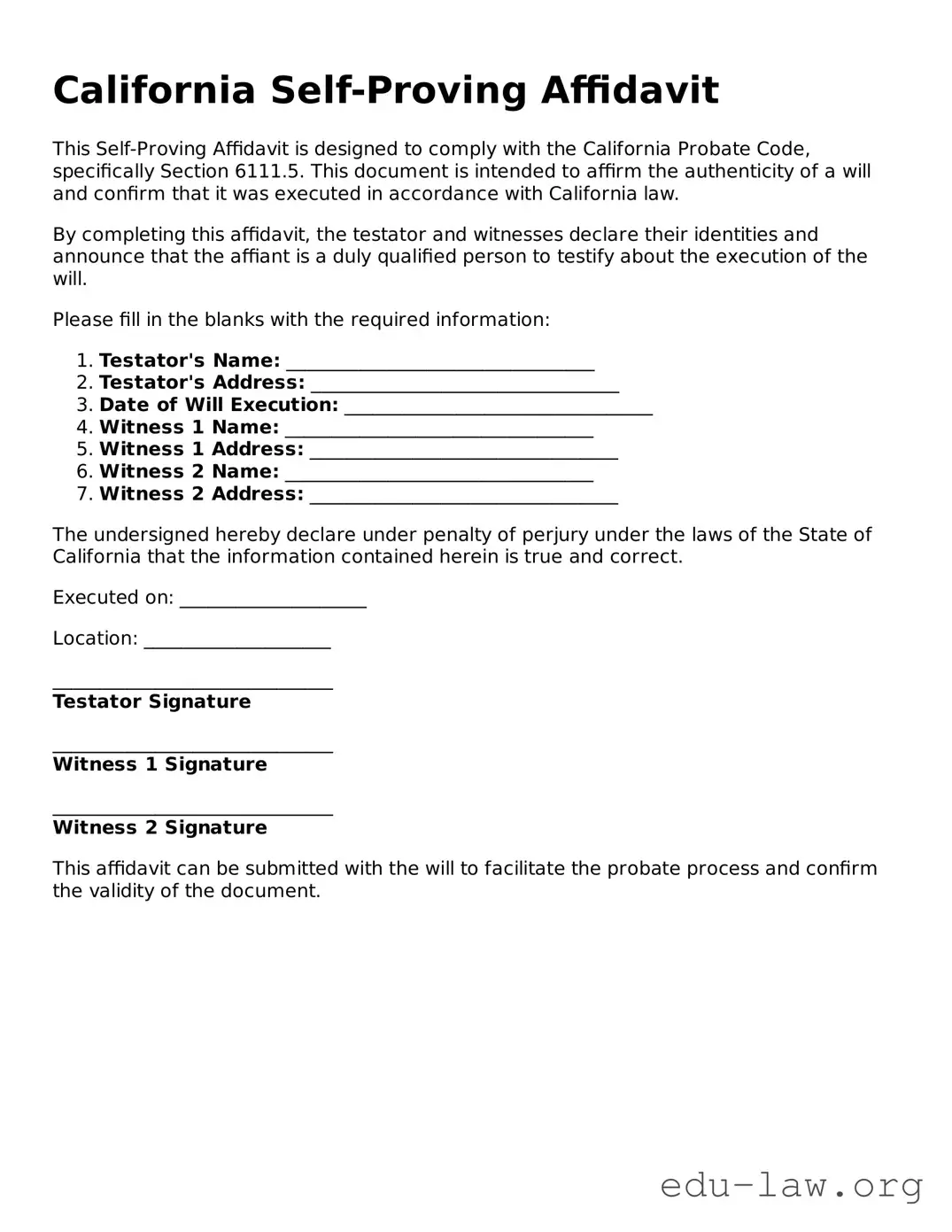What is a California Self-Proving Affidavit?
A California Self-Proving Affidavit is a legal document that allows the validity of a will to be established without the need for testimony from witnesses. This form is completed by the testator (the person making the will) and the witnesses, affirming that they observed the signing of the will and that the testator was of sound mind when it was executed.
Why is a Self-Proving Affidavit important?
This affidavit streamlines the probate process. By having the affidavit on file, heirs can avoid the need to locate and present witnesses during probate, which can be both time-consuming and complicated. Essentially, it can simplify legal proceedings after a person's death.
Who needs to sign the Self-Proving Affidavit?
The Self-Proving Affidavit must be signed by the testator and at least two witnesses. These individuals attest that the testator executed the will willingly and was fully aware of its contents and implications.
Can the Self-Proving Affidavit be used with any will?
Yes, the Self-Proving Affidavit can potentially be used with any valid will executed under California law. However, it is essential that the affidavit is completed correctly and in conjunction with the execution of the will. It’s generally recommended to address this at the same time the will is created.
How is the Self-Proving Affidavit executed?
The Self-Proving Affidavit is executed by signing it in front of a notary public. Notarization adds an additional level of authenticity and can further streamline the probate process. All parties involved should ensure that their signatures are accurately affixed and dated.
What happens if the Self-Proving Affidavit is not included with the will?
If a Self-Proving Affidavit is not included with the will during probate, witnesses may need to be summoned to verify the will's validity. This can lead to delays and complications, especially if witnesses are difficult to locate or if any dispute arises regarding the authenticity of the will.
Is a Self-Proving Affidavit a requirement for all wills in California?
No, a Self-Proving Affidavit is not a legal requirement in California. However, including one can significantly ease the probate process. It is a voluntary step that many testators choose to take to avoid potential legal hurdles later on.
How can someone obtain a Self-Proving Affidavit form?
Self-Proving Affidavit forms can typically be found at legal stationery stores, online legal document services, or through an attorney's office. It is crucial to ensure that any form used complies with California laws and reflects the specific requirements of a valid will.
What should I do if there is a dispute regarding the Self-Proving Affidavit?
If a dispute arises regarding the Self-Proving Affidavit or the will itself, it may be necessary to consult with an estate attorney. Legal guidance can provide advice on how to navigate the complexities of California probate law and help to mediate any disputes that may occur between heirs or beneficiaries.
Can I modify a Self-Proving Affidavit after it has been signed?
Once a Self-Proving Affidavit has been signed and notarized, any modifications would typically require redoing the affidavit and also possibly re-executing the will. Legal changes should ideally be drafted and executed with the same care as the original documents to maintain clarity and enforceability.
